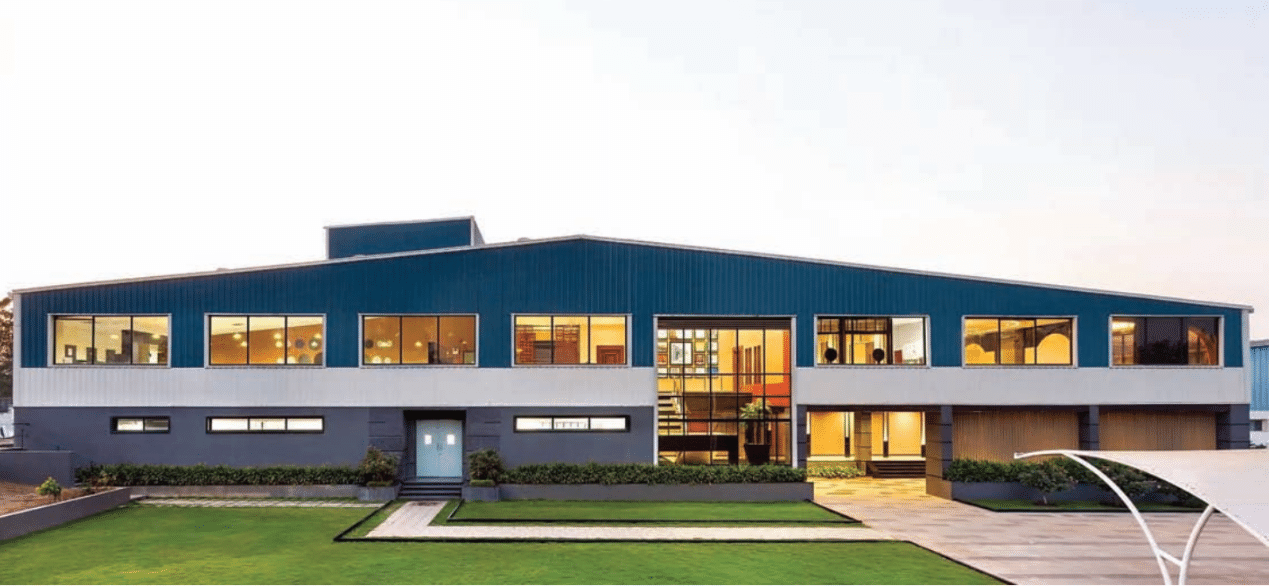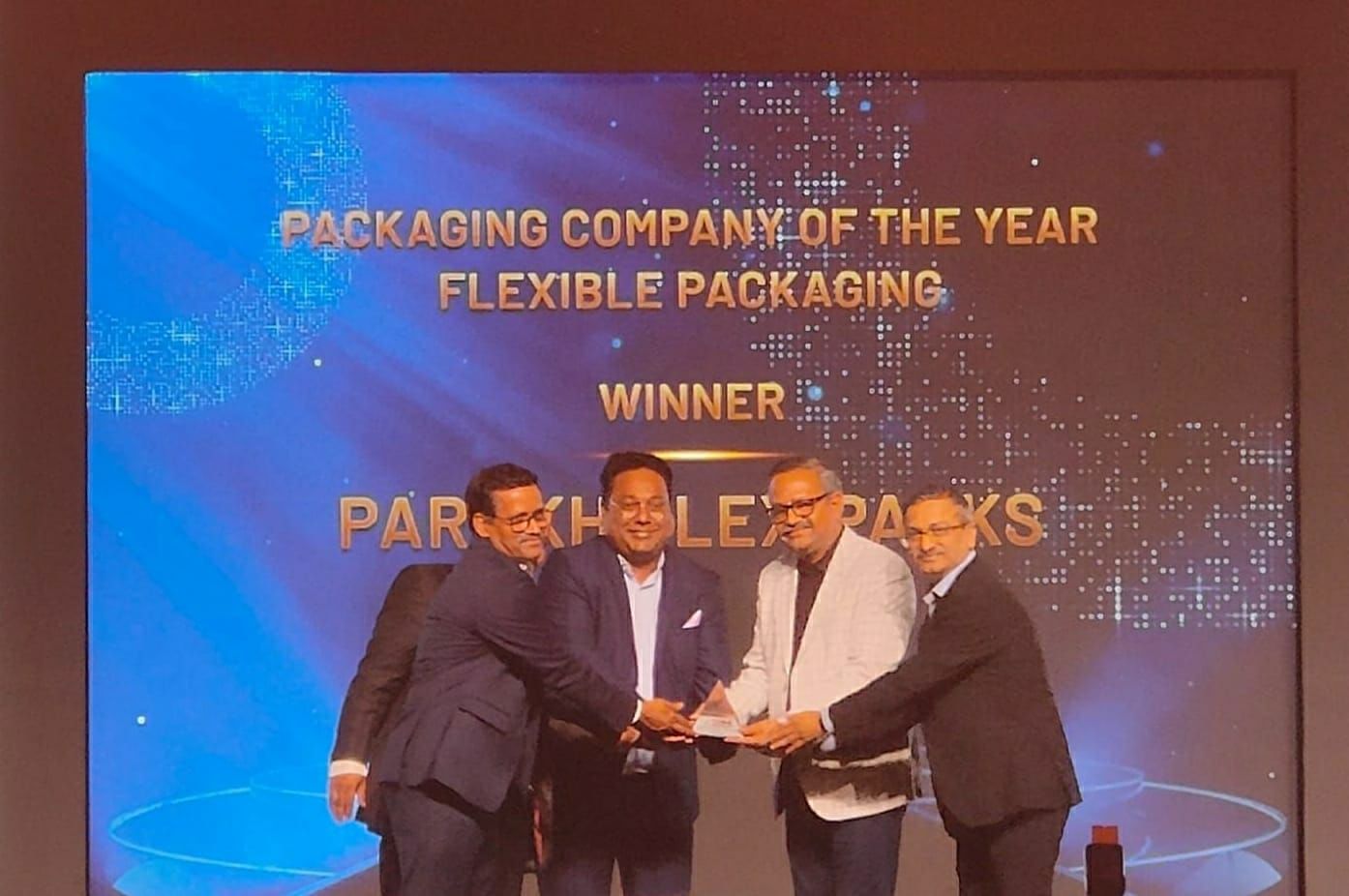Parakh boosts packaging power with process rethink
Parakh Flexipacks has harnessed technology for superior production in high barrier films and blown film. The packaging major has been investing to ensure superior output. Aditya Ghosalkar talks to Vinay Nalawade who helms the flexible packaging business, to understand much more
24 Dec 2023 | 8000 Views | By Aditya Ghosalkar
On 30 October, Parakh Flexipacks bagged the title of Packaging Company of the Year - Flexible Packaging at the PrintWeek Awards 2023.
The factor that guaranteed the Prism was a healthy revenue notch from 10 tonnes per month in 2008 to 1250 tonnes per month in 2023. When probed about the secret sauce that has contributed to Parakh’s success, Vinay Nalawade, CEO, Parakh Flexipacks says, “It’s our strong team built with the lowest attrition rate, full capacity utilisation, and strategic partnerships with customers and suppliers. The key is R&D.”
When probed about the export breakthrough, Nalawade says, “Strict process and quality control is crucial since there is a huge reliability factor for the export clients; you have to be 100% good in what you manufacture and supply.”
He shares that the company has expansion plans with new machines. Materials and process control will be key. He also adds, “Our focus is sustainable speciality films and laminates. The idea is to make the recyclable approach affordable.”
How Parakh gained an edge
In 2003, Pune-based Parakh set up a plant in Kurkumbh (near Pune), to cater to their own Parakh group products (Edible oil and FMCG products) Today, the factory boasts a production capacity spanning up to 1,500 tonnes per month and a presence in Europe, the UK, Canada, Africa and the Middle East.
With an ever-increasing (and very impressive) clientele list, Parakh Flexipack’s caters to the FMCG, dairy, beverage, snacks and confectionary and apparel sectors. It was one of the first FMCG companies in India to have a backward integration to cater to the packaging needs of their products.
When Team WhatPackaging? visited the factory, one thing stood out. The Parakh team offers durable, flexible, sustainable and eco-friendly packaging solutions in adherence to the best manufacturing practices of BRC-IOP and HACCP plus Sedex (Smeta) standards for social and ethical compliance.
Vinay Nalawade says, “The packaging division has always been different in what we do. Today, flexo printing and high barrier blown filmmaking is our USP.”
Flexo galvanises the plant
Under Nalawade’ s mentorship, the pre-press activities were in-house since 2010. This meant investments in the Kodak Flexel NX setup and Siegwerks’s fully automatic ink dispensing system, both had the first-mover advantage in Asia, a tech strategy that has paid off.
Currently, the plant is equipped with five CI flexo print lines, two rotogravure print lines, four blown film barrier lines, three lamination lines, 10 high-speed slitting lines, and 20 pouching lines.
For the flexo and blown film production, team Parakh adheres to the G7 Master Certification. Nalawade says, “This allows ink shade consistency and reduces machine stoppages for rectification and colour matching. Consequently, the opacity of film, machine conditions, and process control have improved the overall operational effectiveness (OEE).”
He adds, “Having an internal ink kitchen and plate-making unit has significantly contributed to the benefits achieved through G7 implementation.”
Nalawade shares how CI flexo boosts the sustainable pledge. Thanks to flexo technology the factory is suited for the implementation of EPR and adheres to the new green norms. He says that flexo is better suited to create the same polymer family film, which is thin, and offers better print quality. Nalawade tells WhatPackaging?, “Thanks to the central impression drum assembly, the press assists the thin film and drying capacity. Also it provides good tension control with less variation.”
The flexible packaging industry in India considers flexo as the poor cousin of gravure. Nalawade however says, “Flexo is new and is in an improvement-mode.” and adds, “digital printing will complement the flexo business.”

Vinay Nalawade says that the flexible packaging business is volatile. And so, at Parakh they follow a practice of booking new machines when the current capacity reaches close to the 75% capacity utilisation mark
Parakh offers more than lower cost and large volumes
Vinay Nalawade briefs WhatPackaging? about Parakh’s speciality print jobs. The highlight is a high-resolution hygiene print on narrow LDPE films (of 22-micron) at high speed on both the flexo and roto process.
Then there is the ultra-high temperature processing (UHT) milk speciality film with high barrier properties and high shelf life.
In food and non-food categories, Parakh has created sustainable products at optimal cost. This involves benchmarking current individual polymers, inks and allied raw materials and following a step-by-step modification approach in the film structure keeping in mind the product-filling machines and their capabilities.
“Material and machine capability understanding at the packaging company and product manufacturing company is the key in addition to the shelf life evaluation requirements of the product,” says Nalawade.
In 2017, when WhatPackaging? visited the Parakh facility, the company’s top management revealed its plans for process automation. When asked for an update, Nalawade says, “We have succeeded in our mission. We follow simple rules - best of machines with proper automation, volumized business and focus on process standards and quality control.”
“In recent years, we have integrated SAP with our manufacturing processes for better control and visibility of cost-effectiveness,” adds Nalawade.
The ups and downs of business
Vinay Nalawade says that the flexible packaging business is volatile. And so, at Parakh they follow a practice of booking new machines when the current capacity reaches close to the 75% capacity utilisation mark. He says, “This helps us to mitigate any bottlenecks which may occur due to the volatile nature of the global market.”
Nalawade says, “To be a leader and best in class, one has to invest in the top technology. More importantly, one cannot be slow in moving.” He says, “Having said that, the delivery dates for imported machines have become a matter of concern.”
However Parakh has strategic partners to support in case of an emergency. Nalawade says, “Generally, the issue is regarding capacity in blown film and printing since most of the machines are imported.”
Nalawade also talks about the Bobst CI flexo press, which was installed in 2015. He says, “It is one of our finest machines and the most of our critical jobs are produced on this machine. It yields faster changeover, provides better quality consistently and leverages the running costs.”
“The finer the line screen and higher the LPI, the better the image quality.” Nalawade says, “Certainly, this must be coupled with proper chemistry of ink rheology and pre-press standardisation. This is the way forward. It benefits the converters with better print quality and lower ink consumption.”
A closer look at green
In this day and age one has to be sustainable-centric in addition to being customer-centric. Nalawade explains how to stay ahead of the green curve. On the regulations front, he says, “Following basic recyclability and pollution control board norms is the key. This translates into the use of a single polymer. One should not fall in the trap of fragmented domestic and export regulations on recyclability which are complicated to adhere to.”
He adds, “Backward packaging business is a blessing for the Parakh Group whose focus is food and flexible packaging. New designs, new structures, fast-to-market, confidentiality and easy turnaround are the key benefits.”
The message is clear: increasing revenues does not always have to triumph over the sustainability targets.
Parakh has handled a few jobs that use water-based inks. Baby steps, but it’s a good start. Nalawade says that the switch from solvent-based to water-based inks has been time-consuming and has involved a lot of trial and error. He believes tweaking the pre-press is a must to succeed and so, slowly and steadily, the company is finding green alternatives.
With a production capacity spanning up to 1,500 tonnes per month and presence in Europe, UK, Canada, Africa and Middle East - the Parakh team follows the best manufacturing practices of BRC-IOP and HACCP as well as the SEDEX (SMETA) standards for social and ethical compliances.
And the good news is, one of India’s largest flexible packaging companies aims to gain an edge over the rivals in the race to tap the latest technology and process.

Vinay Nalawade: Our focus is sustainable speciality films and laminates
Top Jobs at Parakh Flexipacks
In the edible oil film sector, Parakh has been amongst the first to offer a low thickness barrier film. This helped the brand team and the customer to leverage on the cost of the single pouch without compromising on the strength, mechanical properties, and aesthetics of the pouch. “More pouches (yield) per kilo for the customer for Parakh. We could get a better margin in a commodity market,” says Vinay Nalawade.
One of Parakh’s strategic partners has developed a biodegradable patented film. Certified for biodegradable and compostable, its construction is complicated and expensive.
Vinay Nalawade talks about a gulab jamun mix. This is a blend of forward and backward integration. Pre-media, artwork development, laminate manufacturing, mix recipe finalisation, market sentiments about such products, mix manufacturing in bulk and consumer packs and the entire sales reach was achieved in less than seven days.
In ESR, Parakh offers a sustainable product line-up. It comprises biodegradable and compostable packaging, eco-friendly paper-based and PE/PE-based laminates. These use toluene-free inks, biodegradable polymers, recyclable compatibilizers, and adhesives. Also, the utilisation of PIR and PCR as a part of a circular economy adds to the sustainable quotient.

Packaging Company of the Year - Flexible Packaging at the PrintWeek Awards 2023